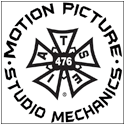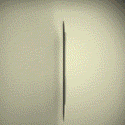
Director Spike Lee, Cinematographer Chayse Irvin turn to Panavision to achieve a gritty ‘70s look
This past weekend marked the one-year anniversary of the tragedy in Charlottesville, Virginia. Hundreds of torch-wielding white supremacists gathered on the campus of the University of Virginia, chanting “Jews will not replace us!” and “Blood and Soil.” The following day, the peaceful college town erupted in violence, as neo-Nazis, Klansmen and alt-right agitators clashed with counter-protestors.
As the National Guard was being called in, a young counter-protester, Heather Heyer, was killed by a 20-year-old man from Ohio James Alex Fields Jr. after he plowed his car into a crowd of counter-protesters gathered to oppose a “Unite the Right.”
To mark the anniversary, writer/director/producer Jordan Peele (Get Out) and producer Jason Blum of Blumhouse teamed up with legendary director (and still CCO of 20-year-old SpikeDDB) Spike Lee to make the new film, BlacKkKlansman. It’s the sobering, sometimes scary, sometimes funny AF story of African American rookie detective, Ron Stallworth (played by award nominee-worthy John David Washington) who infiltrates the Colorado chapter of the KKK.
This true story was powerful material for director Lee who created the powerful films Do the Right Thing, X and School Daze. To achieve the gritty 1970’s look of the film, Lee turned to cinematographer Chayse Irvin, CSC. Not a household name yet, the Canadian-born Irvin is best known for his DP work on the long-form music video works for Beyonce’s “Lemonade” and U.K. artist Sampha’s “Process.”
Irvin was visiting with friends in Sweden when he received an invitation to meet the director. “Spike wanted to inject some of the energy that we had in those works into his film,” Irvin says.
Irvin and Lee discussed the aesthetics of the 1970s era, pouring over period stills and watching films such as The Conversation, The French Connection and even JFK, which got the cinematographer thinking about mixing formats. “I try not to have a predetermined sentiment on a film that then materializes as the aesthetic to apply,” the cinematographer explains.
Where most films today are shot on digital, Lee and Irvin chose to shoot on 35mm. And one of the big reasons for that choice is what the team at Panavision offered.
“One of the big reasons we shot on 35mm film was because Kodak, Panavision and Company 3 all came together to make it possible, and Kodak had just opened a lab in New York. It was serendipitous and guided me to think that film was the right choice.” Have a look at a clip from the film below:
Irvin says of Panavision, “I’ve never really worked with another company except in the past in other countries that don’t have Panavision, but Panavision is pretty much everywhere now. I have collaborated with Jim Roudebush in Los Angeles, Marni Zimmerman in New York and George Rumsey in the U.K.” He added, “These are the people I talk to about glass, formats and frame rates. They are my right hand. I think I brought something fresh to Spike, because he hasn’t collaborated with Panavision on every project—I think this was a treat for him.”
ALSO READ: “The Middle” spinoff ordered to pilot at ABC
Irvin says he was moved by what he saw when he shot 35mm and flashed it and underexposed it. He presented that to Panavision as part of his vision and the company immediately came onboard.
On BlacKkKlansman, Irvin shot on Super 16mm, 35mm, and even Ektachrome. “I found this 35mm Ektachrome via Instagram in someone’s garage from some guy on the west coast,” Irvin recalls. “There were only five reels. I didn’t have an opportunity to check the stock, and we just shot it. On a whim during the shoot, Spike would say, ‘Let’s use that Ektachrome here.’ I was very nervous—I had no idea if there would be an image—but when it came back, it was striking … simply beautiful.
The Panaflex Millennium XL2 served as the production workhorse camera, mated to a variety of lenses including Panavised Zeiss Super Speed MKIIs, Ultra Speed MKIIs, and PVintage optics. He filmed in the 2.40 aspect ratio in 3-perf. “There is a costs savings involved, but I used that extra negative space on the top and bottom of the frame to exactly compose the frame later in post,” says Irvin, who also brought his personal Arricam LT and Zeiss Master Primes into service on the multi-camera shoot.
As part of his mixed bag, Irvin employed an ARRI and a couple Aatons with Zeiss Master Primes for Super 16mm work. “We were shooting Super 16 Double-X black and white with a zoom for one of the opening scenes,” he says. “To emulate an archival print, I collaborated with Panavision to take one of their ARRI SR-3 Super 16mm cameras and modified it so it had a standard gate rather than a Super 16 gate. The standard gate has a very distinctive border around it. It is just the way I like to do things—through the camera. My fantasy is to go back in time when there were no video taps, less tools and you had to trust the camera operator. That type of collaboration is amazing to me.”
“That’s the energy Spike was feeding me with,” he continues, “even on that first day of shooting where he said, ‘Let’s do that Ektachrome right here.’ I had not planned for that. I had to react to it. In jazz, they call it ‘being in the pocket.’ I work with Panavision to put these tools in my pocket, and then when I’m on set and there is synergy, and someone is throwing out an idea, I can reach in and pull out these different tools they have provided for me to give that scene some energy. Panavision works with the cinematographer in a very special way that no other company really can provide. Working with them is like being a member of a special society.”
The Lee-helmed film is his most provocative in years. For myself, it’s his most-rounded piece of work since 2006’s The Inside Man. If you get the chance do take the time to see BlacKkKlansman. With racially-charged times we are living in, it is a film that shows us what can be accomplished when we work together. And it does feature an unreleased song from Prince – 1983’s “Mary Don’t You Weep.”
Source: Panavision
Contact Colin Costello at colin@reelchicago.com or follow him on Twitter @colincostello10.












